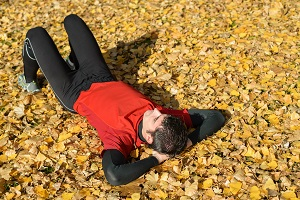MEDIA // ARTICLE

Napping as a Training Technique
June 27, 2025 at 1:00 PM EST.Napping is possibly one of the most surprising training tactic of elite athletes. Research says naps can clear your mind, increase your alertness, reduce stress, boost your immune system and improve your cardiovascular health. In fact, motor memories are enhanced by napping, and motor memory is extremely important when trying to learn a new athletic skill or technique. So why aren’t you napping more?
If you’re having trouble taking a “healthy” nap, there are steps you can take to make sure that power nap does actually power you up, and not leave you feeling even more drained.
Here are a few tips to try out while napping:
- Restrict your nap to 20 minutes. The National Sleep Foundation says you should limit your naps to 20 minutes, 30 minutes on the longer end, to provide for short-term alertness. This “power nap” provides for improved performance without the groggy feeling when you wake up, or interfering with your nighttime sleep.
- Make sure you’re maximizing your naps for athletic performance. We mentioned 20-minute “power naps” as the ideal nap, but there are other types of naps for other types of effects. A 15-minute nap, taken immediately after consuming caffeine, is called a “caffeine nap”. Research shows caffeine takes between 20 and 30 minutes to kick in, so a caffeine nap tricks your body into resting and then the caffeine kicks in as soon as you wake up. Studies show a significant reduce in sleepiness after this type of nap. A long nap lasting 60 minutes or more can also be useful in certain situations. These naps allow your body to enter deep-sleep stages, which may result in sleep inertia (grogginess) upon waking, but do result in greater and longer-lasting performance benefits.
- Schedule your nap ahead of time. By napping at the same time every day, or at least on the days you plan to nap, you’ll train your body to recognize when it’s naptime. Napping early in the morning often doesn’t work because your body isn’t ready for more sleep, but late in the day may impact your ability to fall asleep at night. The sweet spot is late morning or early afternoon.
- Create an ideal sleep environment. A less than desirable napping spot may impact your ability to fall asleep quickly or obtain quality zzz’s. Choose a restful spot, with limited noise and light. Invest in black-out curtains or a sleeping mask to shut out the light. Make sure the room temperature is conducive to sleeping, meaning if you’re the type who likes to burrow under the blankets, you’re going to need to keep your napping nook ice-cold during the day.
- Use lavender in your sleep environment. Studies show that falling asleep to the smell of lavender can not only aid in a restful nap, but can help you wake up feeling more alert. In addition, adding the smell every time you nap or go to sleep at night can also help train your body to fall asleep quickly.
